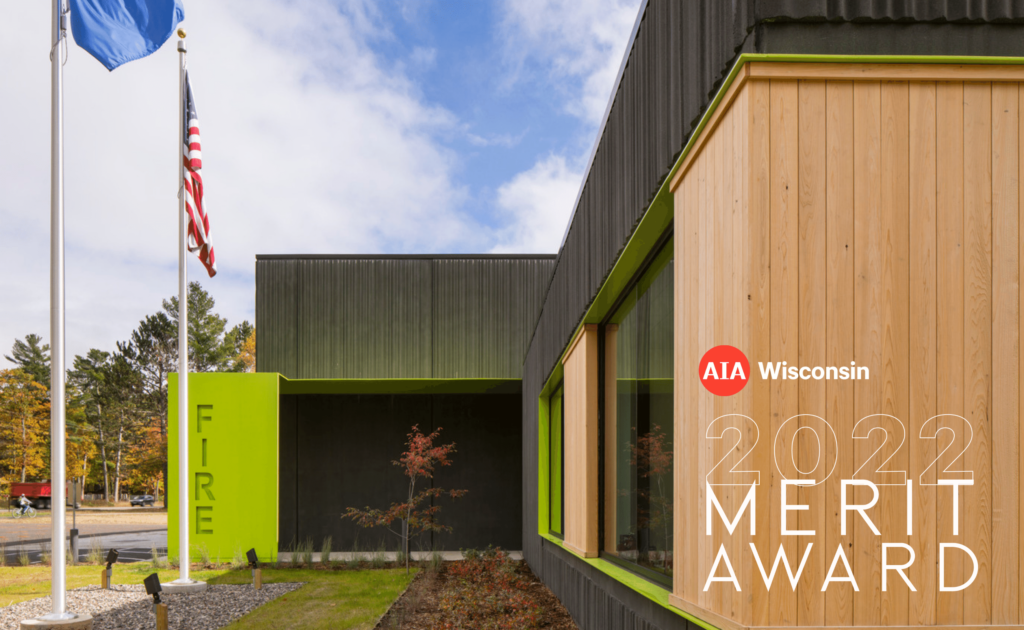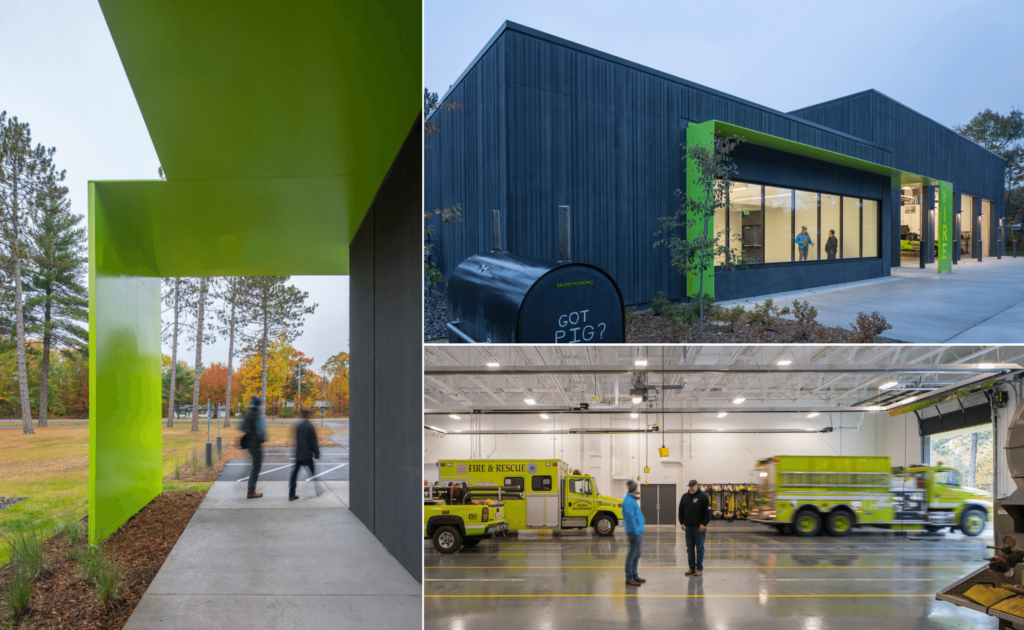
Overview
The population of Manitowish Waters, a town of less than 600, swells in the summer season with tourists and temporary residents from around the region who are drawn to its chain of lakes and variety of outdoor activities. The company is one of the last remaining volunteer fire companies in the state, providing its rural community with fire, rescue, and EMS services. This economical project replaces the town’s obsolete facility to support a nimble and wide-ranging emergency response, and to expand its use as a community hub.
Reflecting the Mission & Culture
The variety of apparatus and equipment at the Manitowish Waters Fire Hall reflects the needs of a relatively remote, rural community and the challenges of emergency response in a varied landscape of wooded hills, lakes, and marshes. Maintenance of equipment and regular training are the hallmarks of the everyday experience of firefighters. The pride the company takes in its equipment is reflected in its unique branding—high visibility safety green flames adorn the pump and ladder trucks, expressing the primary importance of the equipment to emergency response. The motto “Skippystrong” appears throughout that branding, memorializing the beloved former fire chief whose son currently heads the department. The cultural impacts of such branding cannot be overstated; the ritual maintenance and training, the camaraderie and shared experience of a company of volunteers who often face dangerous circumstances, and the importance of volunteer service to the safety and well-being of the community all reinforce the symbolism and meaning imbued in the trappings of the fire service.

The new fire station functions as one such piece of equipment, as the primary locus of maintenance and training activities housing everything needed for emergency response. The folding acid green canopies express this connection—forming the public entries to the building and framing the space of the internal activities—and were embraced by the fire fighters as an extension of the Company’s identity. Just as the fire apparatus and equipment both serve an important function and become imbued with meaning, so the building supports emergency response and training activities, as well as community gathering. The firefighters, their families, friends, and greater Manitowish Waters community share the space for small and large events.
Reflecting the Landscape
Northern Wisconsin’s landscape reveals its geologic history of glacial activity—a rolling forested topography pock-marked with ponds, lakes, bogs and wetlands. The Fire Hall takes cues from this geography: the exterior of the building is clad in custom precast panels with a variegated pattern of ever-changing vertically oriented shadows recalling the forms and silhouettes found in the surrounding forest as well as the rippling surface of the nearby lakes.
Planning for Economy, Safety, and Flexible Use
The 10,300sf Fire Hall is comprised of two simple boxes buffered by a central north-south corridor. The building, a very economical structure of load-bearing architectural precast walls and steel framing, provides a durable long-lasting facility to withstand the rigors of equipment maintenance and training. The apparatus bay box houses vehicles, turnout gear, and cleaning/decontamination equipment to keep contaminants contained and separated from the clean office/training side of the building. A fire engine, ladder truck, ATVs, boats, trucks, and ambulance are housed in the building’s four drive-through bays, allowing for year-round maintenance of vehicles. The clean side of the building houses offices, a training/events area, kitchen, fitness center, restrooms, and showers. The training space doubles as a flexible public meeting space, easily accessed without disturbing the emergency response spaces.


Leave a Reply